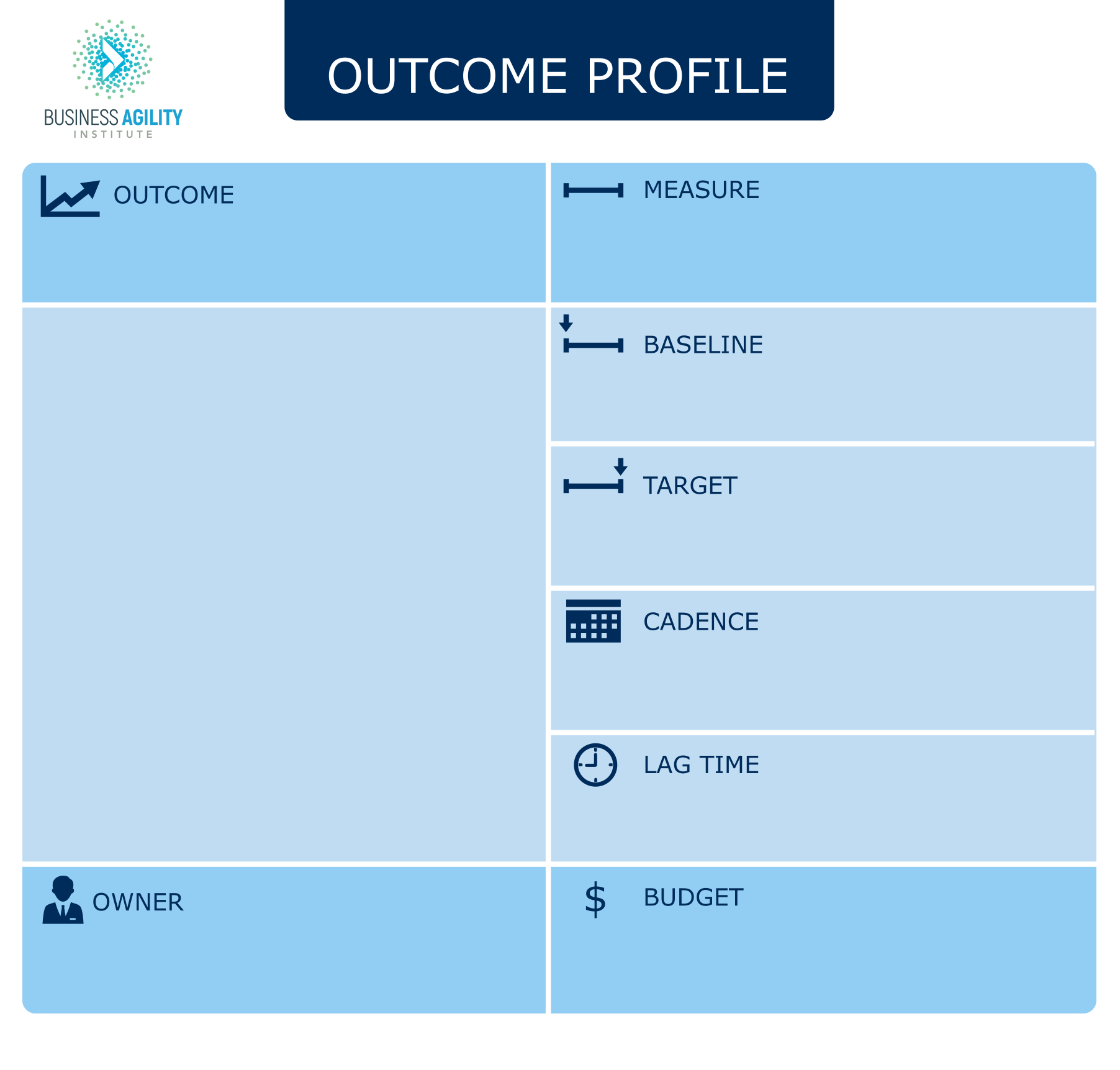Preparation | Room Setup | Facilitation Process | Post-Event Mailout | Downloads
Preparation

Share the Outcome Profile article as pre-reading to all registered attendees.
Print out sufficient copies of the outcome profile sheet – one per person and a few spares.
Room Setup
Set up the room with tables and chairs. Ideally rounds of 6-8, but any configuration with tables will work.
Facilitation Process
Participants will create an outcome profiles that defines the context, intent and expectations for the team, division or organisation. While the characteristics of a profile will differ between participants, each profile will contain;
- Summary — This is a short description of the outcome.
- Owner — Who (either an individual or team) is accountable for this outcome?
- Measurement — If the outcome is quantifiable, how do you measure it? How will you measure the effectiveness of the activities against the outcome target?
- Current baseline — What is the current state of the measure?
- Current target — What are you trying to achieve? Try to avoid percentages and remember that this is a current target. It will change over time. Depending on the context of the outcome, the current target may also have a timeframe or due date.
- Cadence — How frequently will you be measuring the outcome? Automatic measures (those which can be calculated without human intervention) should be done as regularly as reasonable. Those which require polls or surveys of users or team members should be scheduled to avoid overload.
- Lag/Lead Time — How soon after doing work will you see the effect on the outcome?
- Dependencies and Order (ranking) — Where does this outcome sit in relation to your other outcomes?
- Budget — What is your maximum available investment/budget to achieve this outcome?
Start by getting individuals to sit together in either company or industry groups.
We use the 5-whys process to get to the root outcome for an organisation. Start by demonstrating 5-whys for the audience with a volunteer from the audience.
“What do you do?”
“I write accounting software”
“Why” > “Why” > “Why” > “Why”, etc.
If they say “to make money”, they’ve gone too generic. Bring it back to the earlier “why”. Remind them that “you are not in business to make money”. You may also go down different branches to explore different “why’s”.
Now get each group to form pairs go through the 5-why’s process with each other. Once everyone has defined an outcome, get them to fill in an outcome profile for it. Current baseline, target and owner may be kept blank.
If there is time, introduce the idea of enabling constraints. To be effective in the long term, outcomes need to be constrained. Get the attendees will create a set of ranked principles – rules that apply to all activities regardless of outcome. Principles may constrain a team in areas of quality, communication, staff engagement, security, branding or any other common area. Examples may include “must follow brand guidelines, must pass security testing, or should get buy-in from marketing department”.
Post-Event Mailout
Thank people for coming. Remember to invite them to join the Business Agility Institute.
Downloads
Outcome Profile Resources: Download an editable Outcome Profile template (PPTX or SVG)
